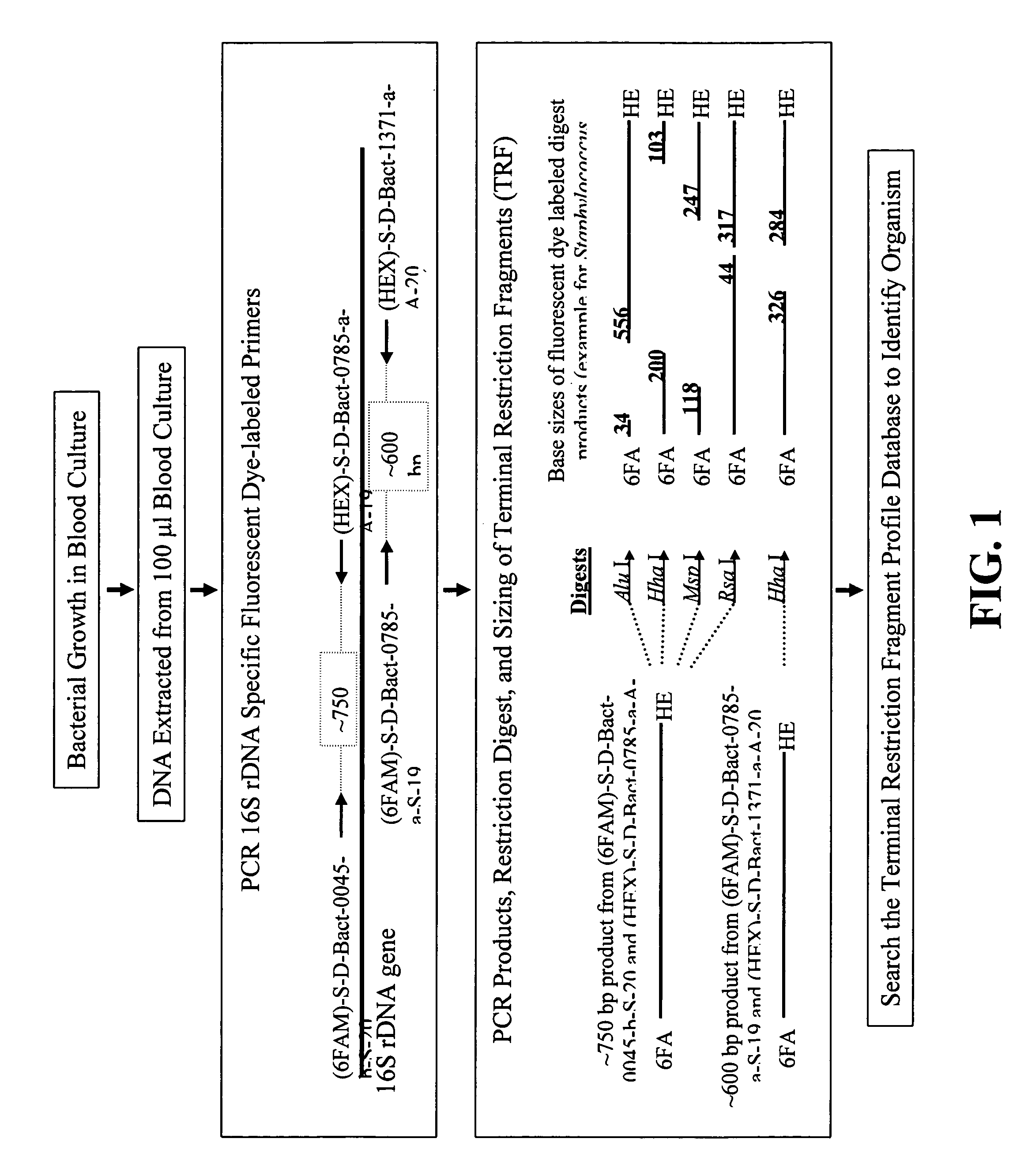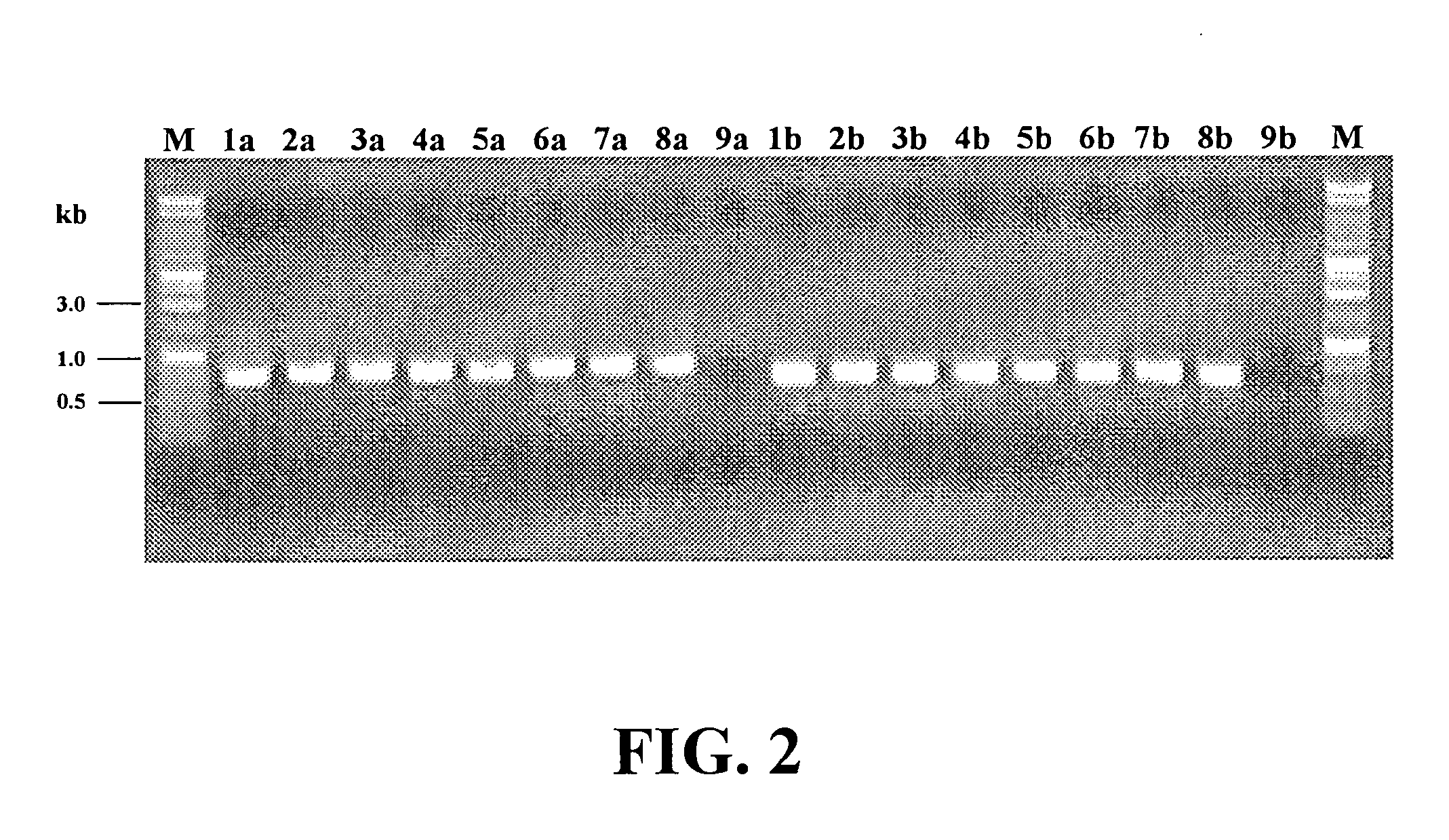Rapid identification of bacteria from positive blood cultures
a technology of positive blood culture and rapid identification, applied in biochemistry apparatus and processes, instruments, material analysis, etc., can solve the problems of increasing health care costs, nocomial infections, and affecting the quality of life of patients, so as to prevent the development of antibiotic resistant bacteria, reduce unnecessary use of broad-spectrum antibiotics, and improve the effect of timely prescription
- Summary
- Abstract
- Description
- Claims
- Application Information
AI Technical Summary
Benefits of technology
Problems solved by technology
Method used
Image
Examples
Embodiment Construction
[0021]Materials and Methods:
[0022]The procedure for identifying bacteria using TRF profiles is diagrammed in FIG. 1. As shown in FIG. 1, blood samples are first cultured in conventional fashion to allow any bacteria present in the samples to multiply. A 100 μl aliquot is then taken from each sample and the DNA extracted from each aliquot in conventional and well-known fashion. The extracted DNA is then subjected to PCR amplification using at least two different pairs of 16S rDNA-specific primers. At least one individual primer of each primer pair is labeled, preferably with a fluorescent label. In the preferred method, both primer in each primer pair is labeled with a differentially-detectable label. As shown in FIG. 1, the fluorophores 6-FAM and HEX are used (see the Examples). Any pair of differentially detectable labels will suffice. A host of suitable fluorophores for use in labeling PCR primers can be obtained commercially from Molecular Probes, Eugene, Oreg.
[0023]Once obtained...
PUM
| Property | Measurement | Unit |
|---|---|---|
| pH | aaaaa | aaaaa |
| restriction fragment length | aaaaa | aaaaa |
| length | aaaaa | aaaaa |
Abstract
Description
Claims
Application Information
 Login to View More
Login to View More - R&D
- Intellectual Property
- Life Sciences
- Materials
- Tech Scout
- Unparalleled Data Quality
- Higher Quality Content
- 60% Fewer Hallucinations
Browse by: Latest US Patents, China's latest patents, Technical Efficacy Thesaurus, Application Domain, Technology Topic, Popular Technical Reports.
© 2025 PatSnap. All rights reserved.Legal|Privacy policy|Modern Slavery Act Transparency Statement|Sitemap|About US| Contact US: help@patsnap.com



